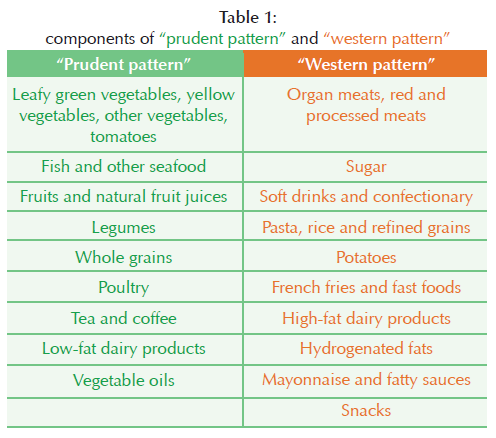Dietary patterns and Asthenozoospermia risk
Infertility affected 10–15% of all reproductive-aged couples, and male factors contribute to almost 50% of cases of infertility1. Throughout the past decades, there has been much discussion about the changes in semen quality2-4.
Previous studies show that high intake of antioxidants, fruits, vegetables, poultry, seafoods, skim milk, shellfish, lettuce, tomatoes, apricots, and peaches, as well as low intake of sweets and processed meat, especially foods containing high amounts of saturated fat, were reported to have favorable association with sperm quality5-12.
Our study evaluated the associations between dietary patterns and asthenozoospermia risks in a case-control study in Iranian men, to increase understanding of the role of dietary patterns in the etiology of asthenozoospermia*.
342 men aged between 20 and 40 years interviewed
In total, 107 asthenozoospermia cases and 235 control cases were interviewed through the infertility clinics in Tehran, Iran, from January 2012 to November 2013. Usual dietary intakes were collected using a semi quantitative food frequency questionnaire and semen quality data were analyzed according to the fifth edition of the World Health Organization (WHO) guidelines. Dietary patterns were derived using factor analysis. The first tertile served as the reference category for regression analyses.
In principal component analysis, 2 dietary patterns emerged: a “prudent pattern” and a ““Western pattern” (cf Table 1).
Lower risk of asthenozoospermia for participants of the prudent pattern
Our results revealed that participants in the highest tertile of the prudent pattern scores had 54% lower risk of asthenozoospermia compared to those in the lowest (p for trend: 0.003); after adjustment for potential confounders. In contrast, the Western pattern was positively associated with the risk of asthenozoospermia (highest tertile; odds ratio [OR] D 2.86; 95% confidence interval [CI], 1.83–2.97).
Our findings suggest that a diet composed mainly of plant-based foods may be associated with a reduced risk of asthenozoospermia whereas an adherence to a Western pattern is a potential indicator of increased risk.
The current study indicates that efforts to improve diet quality should focus on the diet as a whole, not on single nutrients and foods.
Because epidemiological evidence on this topic is extremely limited, well-designed case control and prospective cohort studies are required to confirm the relationship between dietary patterns and the risk of asthenozoospermia in developing and developed countries.

*Asthenozoospermia reduces motility or vitality of spermatozoa and is one of the major causes of infertility or reduced fertility in men.
Based on: Eslamian G, Amirjannati N, Rashidkhani B, Sadeghi MR, Baghestani AR, Hekmatdoost A. Adherence to the Western Pattern Is Potentially an Unfavorable Indicator of Asthenozoospermia Risk: A Case-Control Study. J Am Coll Nutr. 2015 Mar 12:1-9
References
1. Rowe PJ, Comhaire FH, Hargreave TB, Mahmoud AMA, and the World Health Organization: “WHO Manual for the Standardized Investigation, Diagnosis and Management of the Infertile Male.”Geneva: World Health Organization, 2000.
2. Pastuszak AW, Lipshultz LI. Words of wisdom. Re: human semen quality in the new millennium: a prospective cross-sectional population-based study of 4867 men. Eur Urol 62:1197–1198, 2012.
3. Osegbe DN, Amaku EO. Semen features of 596 truly infertile men. Eur Urol 13(3):169–73, 1987.4. Hu FB: Dietary pattern analysis: a new direction in nutritional epidemiology. Curr Opin Lipidol 13:3–9, 2002.
5. Young SS, Eskenazi B, Marchetti FM, et al. The association of folate, zinc and antioxidant intake with sperm aneuploidy in healthy non-smoking men. Hum Reprod. 23:1014–1022, 2008.
6. Eskenazi B, Kidd SA, Marks AR, et al. Antioxidant intake is associated with semen quality in healthy men. Hum Reprod 20:1006–1012, 2005.
7. Mendiola J, Torres-Cantero AM, Moreno-Grau JM, et al. Food intake and its relationship with semen quality: a case-control study. Fertil Steril 91:812–818, 2009.
8. Mendiola J, Torres-Cantero AM, Vioque J, et al. A low intake of antioxidant nutrients is associated with poor semen quality in patients attending fertility clinics. Fertil Steril 93:1128–1133, 2010.
9. Eslamian G, Amirjannati N, Rashidkhani B, et al. Intake of food groups and idiopathic asthenozoospermia: a case-control study. Hum Reprod 27:3328–3336, 2012.
10. Minguez-Alarcon L, Mendiola J, Lopez-Espin JJ, et al. Dietary intake of antioxidant nutrients is associated with semen quality in young university students. Hum Reprod 27:2807–2814, 2012.
11. Afeiche M, Williams PL, Mendiola J, et al. Dairy food intake in relation to semen quality and reproductive hormone levels among physically active young men. Hum Reprod 28(8):2265–75, 2013.
12. Jensen TK, Heitmann BL, Jensen MB, et al. High dietary intake of saturated fat is associated with reduced semen quality among 701 young Danish men fromthe general population. AmJ Clin Nutr 97:411–418, 2013.
